In effective pass coverage, what you see isn’t always what you get
Part of an occasional series
Football pass coverages sometimes are convoluted and other times are misunderstood. And most of the time they’re more nuanced than we need to care about. In our last installment, we looked at the picture the offense attempts to paint in the passing game. But what about the one the defense is sketching all over the field?
Could you explain this in three sentences or less?
There are three main types of pass coverage. You’ve heard of the first two (man and zone), but you might not be too familiar with the third one (match). Pinning down exactly what coverage a team is in can be difficult, but we can get an approximation.
So, what about cover-one, -two, -three, et al.?
We’ll get there, but that’s the wrong initial question. Before we get to individual coverage types, use the power of observation to determine what coverage type it isn’t before figuring out what it is.
Before every play, ask yourself: MOFO, MOFC or MOFE?
Are you calling me a …
Don’t be silly! Those letters stand for something.
MOFO: Middle of the field open
MOFC: Middle of the field closed
MOFE: Middle of the field empty
Is this some deep philosophical introspection?
Nah, fam, it’s all about the safeties. They usually line up about 11 yards from the line of scrimmage. They’ll tell you what you need to know.
Are there two safeties deep? Then the middle is open. One? Closed. None? Empty.
So if you’re able to identify that, you’re halfway to thinking like an NFL quarterback pre-snap!
Okay, but what does that tell me exactly?
From here, we can use the process of elimination to approximate coverages.
MOFE is pretty simple. A team can play zone behind it, but it’s pretty much always man because this setup really signals the intention to blitz a bunch of players.
As for the others …
MOFO:
- Zone: Cover-two, cover-four, cover-six
- Match: Looks like man pretty much, but with exceptions
- Man: Cover-two man
MOFC:
- Zone: Cover-three
- Match: Three-match (looks a lot like regular cover-three)
- Man: Cover-one
Whoa, big guy, that’s pretty confusing!
I know. It certainly can be, but stay with me. We’ll start with the man coverages.
Cover-one is man across the board with a deep zone and an initially unoccupied intermediate zone. Our unoccupied safety gets to “rob” any throws into that zone. MOFC coverages provide an ancillary strength in the fact that they get seven and often eight players near the line of scrimmage for additional run support.

Okay, now let’s go to cover-two man. Two safeties deep, and everyone mans up underneath. Simple.
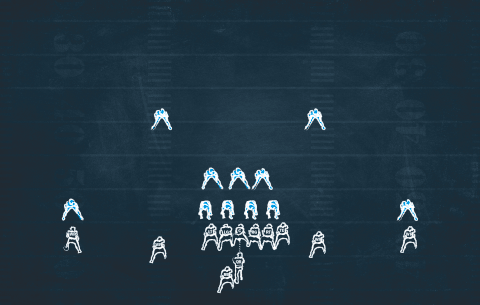
Okay, so what about the zone stuff?
As you may have been able to gather by now, the numbers that delineate coverages will almost always tell you how many DBs are deep.
So we’ll start with cover-three. It’s simply three DBs deep and everyone else underneath behind the defensive line. Here are the zone responsibilities for the back seven players:

MOFC zone coverage does a little better covering the deep areas near the numbers because there’s less ground for a DB to cover as opposed to its counterpart … MOFO coverage. Its first basic zone coverage is cover-two, the zone brethren of cover-two man.
In cover-two, the safeties effectively split the field into two deep halves. Everyone else underneath plays zone coverage. These zones have fancy names, but they don’t really matter. It’s two deep, five underneath.
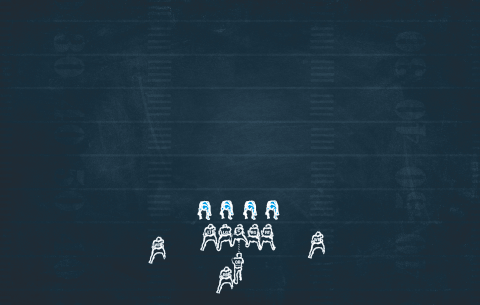
For cover-four, when the ball gets snapped, it’s four guys deep, and three guys underneath:
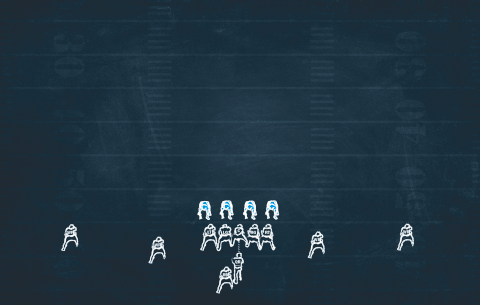
So defenses just keep things this simple? That doesn’t seem smart.
We’re just scratching the surface. The modern evolution of coverages is about blending them. That is done by manipulating those safeties pre- and post-snap. One way to do that is to “spin” the safeties.
This might look like it’s about to be cover-four.
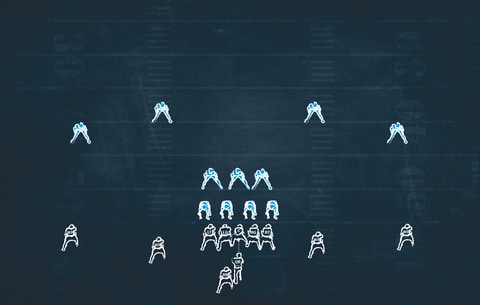
But guess what? After the snap, the safety on the right rotates down, and the one on the left moves to the middle of the field. Now it’s cover-three, specifically a variation called cover-three buzz:
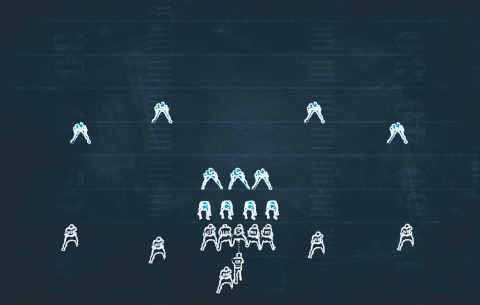
Cover-two’s deficiency can be down the middle of the field. So in the early 2000s, the Tampa Bay Buccaneers started moving linebacker Derrick Brooks into the void. Effectively, this now plays similar to cover-three, and we know the coverage as Tampa Two.
It’s doable, but it gets tough if you don’t have a player such as Brooks or Brian Urlacher who can read run or pass effectively and shoot deep if he sees it’s going to be a pass.
Another way to trick the quarterback is to play split field coverages, with one type on one side of the field and another on the other side. That gets way complicated, and I’ll touch on it in a bit, but for now the most straightforward way to mix coverages is …
Cover-six: That does not mean six defenders deep (although that’d be pretty funny). It means a mixture of cover-four and cover-two. (Four plus two equals six — football coaches are basically Isaac Newton with headsets.)
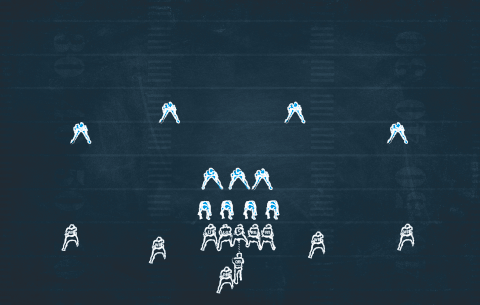
You talked about man and zone, but what’s match?
In a nutshell, match coverage lets a defense play this if the offense does that after the snap, which you can see an example of here.
A pioneer of this type of scheme is TCU’s longtime coach, Gary Patterson. He takes the split field coverage concept to its logical extreme by splitting his defense up into three units (the front six players in the box, then three DBs on one side and two DBs on the other).
The Horned Frogs play a sort of matchup zone that functionally plays out like man coverage but not until the receivers are into their routes, and it starts out looking similar to regular zone.
Man match is its alternative. That looks an awful lot like straight man defense, and in many ways it is. For instance, if there’s one corner matched up with one receiver on the backside of a formation, that corner’s playing man no matter what fancy name you give the coverage. One of man match’s true strengths is the ability to take care of running backs who go out on routes.
The deeper you go down the coverage rabbit hole, the more you’ll notice that many of the adjustments and tweaks are spokes off different coverage hubs. And in the end — even if coaches don’t want to admit it — every defense turns into man defense the longer removed you get from the snap.
The topic for the next installment? What defenses are trying to do up front.
Read more from the “Watching Football Smarter” series:






